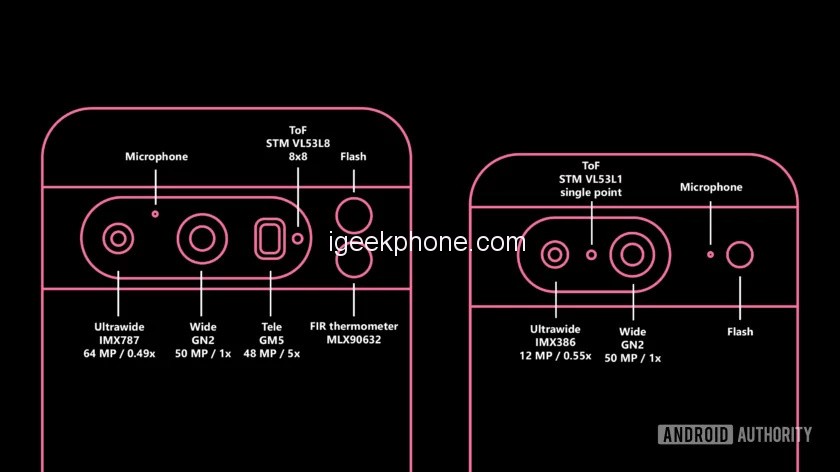Androidauthority has recently leaked a series of exciting details about the highly anticipated Google Pixel 8. According to the leaked information, Google has invested heavily in computational photography, aiming to deliver exceptional imaging performance with their new flagship device.
One of the notable upgrades in the Pixel 8 series is the camera sensor. For four consecutive years, Google has utilized the Samsung ISOCELL GN1 as the primary camera sensor. However, this year, they are stepping up their game by incorporating the GN2 sensor, which promises to enhance the overall camera capabilities. Compared to its predecessor, the GN2 sensor boasts a 35% increase in light input, allowing for brighter images and faster shutter speeds. Furthermore, it effectively reduces blurring, resulting in sharper and more detailed photographs.
With the support of the Tensor G3 processor, the Pixel 8 is expected to take image quality to new heights. This powerful combination of hardware and software is anticipated to significantly improve the imaging capabilities of the Pixel 8, making it a standout performer in the smartphone camera arena.
Another noteworthy addition to the Pixel 8’s camera features is the support for Staggered HDR. This innovative technology aims to minimize the delay between HDR frames, resulting in faster shooting speeds. This enhancement is expected to further elevate Google’s HDR+ capabilities, providing users with a quicker and more reliable shooting experience.
For the Pixel 8 Pro variant, Google has taken a significant leap forward in terms of ultra-wide-angle photography. The device will upgrade from the 12MP Sony IMX386 sensor to the 64MP Sony IMX787 sensor. This substantial upgrade, coupled with a sensor size almost twice as large as its predecessor, is anticipated to greatly enhance the image quality for ultra-wide-angle shots.
While the camera software for the Pixel 8 is still in the early stages of development, reports suggest that Google is prioritizing the adaptation of the new hardware. However, there have been improvements made to certain basic functions. Adaptive flash and “segmented AWB” are among the features that have received enhancements. The adaptive flash feature intelligently adjusts the flash intensity based on the scene, ensuring optimal lighting conditions. On the other hand, “segmented AWB” leverages AI technology to analyze and divide the current scene into different parts, selectively applying distinct processing techniques to specific areas of the image. Additionally, there are rumors that Google may introduce a video blur level selection function to the movie mode of the Pixel 8, further expanding the creative possibilities for users.
In conclusion, the leaked details about the Google Pixel 8 showcase Google’s commitment to delivering an exceptional camera experience. With the upgraded camera sensor, the powerful Tensor G3 processor, and the addition of innovative features like Staggered HDR, the Pixel 8 is poised to set new benchmarks for smartphone photography. Moreover, the improvements in the Pixel 8 Pro’s ultra-wide-angle photography capabilities and the enhanced camera software features indicate Google’s dedication to providing users with top-of-the-line imaging performance. As the release date approaches, anticipation for the Google Pixel 8 continues to grow, with users eagerly awaiting the opportunity to capture stunning photographs and videos with this highly advanced smartphone.
Read Also: Google Pixel 8 Series will come with 6.16/6.7-inch screens
Do not forget to follow us on our Facebook group and page to keep you always aware of the latest advances, News, Updates, review, and giveaway on smartphones, tablets, gadgets, and more from the technology world of the future.











